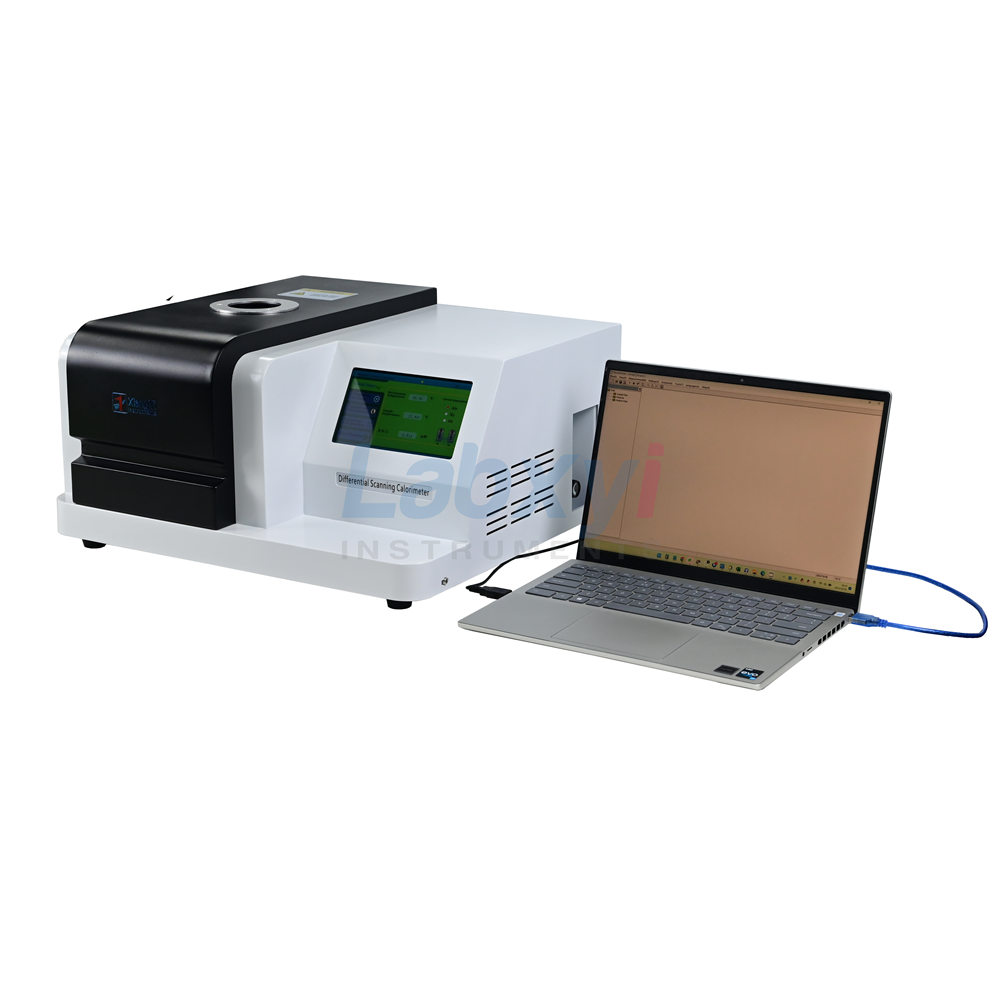- Introduction
With the continuous development of advanced composite materials, their application fields are becoming more and more extensive, and people are paying more attention to their quality control technology. It is very effective to use thermal analysis methods to monitor the curing process of thermosetting resins and determine the optimal curing conditions. DSC method is widely used because of its small sample amount, high measurement accuracy, and suitability for various curing systems.
Powder coating refers to dry powdered coating that can flow freely. The main difference between powder coating and traditional liquid paint is that powder coating does not need to use solvents to keep binders and fillers in liquid suspension. It mainly forms a film on the surface of the component through electrostatic adsorption and heating curing.

- Preparation before the experiment
1.DSC3000 Differential Scanning Calorimeter (Instrument brand: Xiangyi Instruments Xiangtan Limited)
- Ordinary nitrogen (purity 99.99%), gas flow: 20ml/min
- The sample to be tested is epoxy resin powder, the sample quantity must be no less than 15mg
- Standard tweezers and crucible
- Weighing balance: electronic balance, graduation value 0.0001mg
- Heating rate: 10℃/min
- Cut-off temperature: 200°
3.Experimental operation part
- Experimental parameter settings, as shown below:
.jpg)
- Experimental principle: Differential scanning calorimetry (DSC) measures the relationship between the heat flow difference or power difference input to the sample and reference material and temperature or time during the process of heating, cooling or constant temperature under programmed temperature control. It provides quantitative or qualitative information on heat absorption, heat release, heat capacity change, etc. in the process of physical and chemical changes.
Generally, in the DSC thermogram, the endothermic effect is characterized by a raised peak (thermal enthalpy increase), and the exothermic effect is characterized by a reverse peak (thermal enthalpy decrease). We mainly need to check the curing exothermic peak of the sample at around 140°.
- Experimental results:
.jpg)
4. Experimental Data Analysis
The test conditions are 15 mg dosage and 10°C/min heating rate. From the figure below, we can see that an exothermic peak appears in the range of 130~150°C, and a melting phase transition occurs, with a peak value of 144.02°C and a starting point of 142.32°C. Determination of the decomposition temperature of the solidified material: Different formulas have different decomposition temperatures of the solidified material. Differential scanning calorimetry (DSC) can conveniently test the decomposition temperature of the solidified material, reflecting the thermal stability of the solidified material.
Most manufacturers do not provide clear information on the chemical composition and structure of latent curing agents, so quality monitoring is more troublesome. We can use differential scanning calorimetry (DSC) to observe the DSC spectrum under programmed temperature conditions, and monitor the quality of the latent curing agent based on information such as phase change, natural reaction heat, and thermal decomposition temperature reflected in the DSC spectrum.
